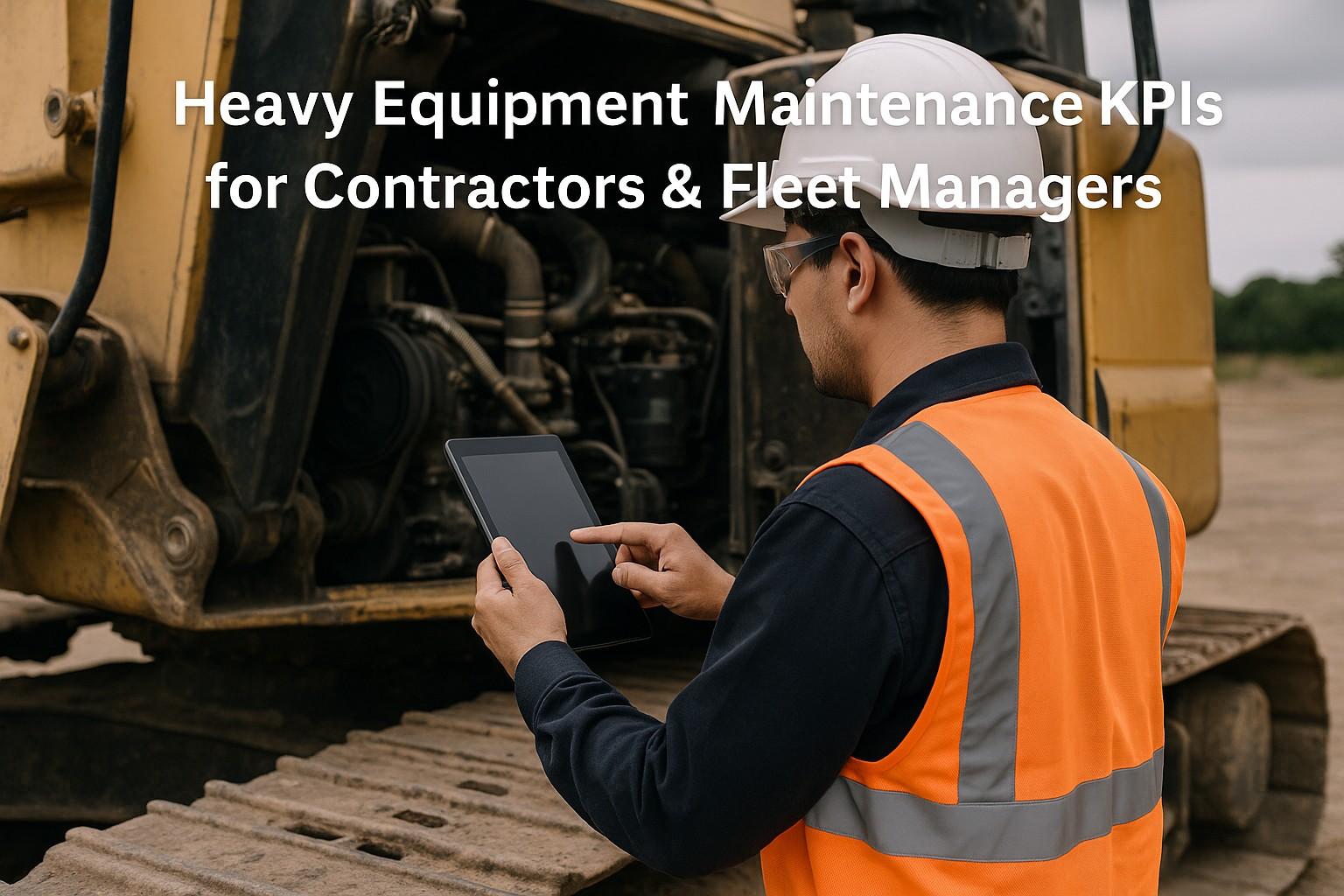Fuel level sensors are critical components in modern vehicles and industrial equipment that provide accurate measurements of remaining fuel. These automotive fuel sensors enable the fuel gauge to display precise readings, helping drivers and fleet managers monitor fuel consumption. From basic float arm sensors to advanced ultrasonic fuel level measurement systems, the technology behind fuel monitoring systems has evolved significantly. This comprehensive guide explores different fuel level indicator technologies, manufacturers like Bosch fuel sensors and Denso fuel sensors, and how these fuel gauge sensors work across various applications. Learn how to integrate fuel monitoring with your fleet management.
Optimize Your Fleet with HVI Software
Manage your heavy vehicle fuel management systems and maintenance with our specialized software solution. Perfect for fleet managers seeking to improve efficiency and reduce costs.
Understanding Fuel Level Sensors: Basic Functionality and Importance
At their core, fuel level sensors are devices designed to measure the amount of fuel in a tank and relay this information to a display system. In automotive applications, the fuel level sensor connects to the vehicle's fuel gauge indicator, providing drivers with real-time information about their fuel status. These automotive fuel sensors play a crucial role in vehicle maintenance and efficient operation.
Modern fuel monitoring systems do more than just show when you're running low on gas. They integrate with onboard computers to calculate fuel efficiency, optimize engine performance, and even predict maintenance needs. As vehicles become more sophisticated, digital fuel level technology continues to advance, offering higher precision and additional features. Track your fleet's fuel consumption digitally.
Types of Fuel Level Sensors: Comparing Technologies
The market offers various fuel level sensor types, each with distinct operating principles, advantages, and limitations. Understanding the differences helps in selecting the appropriate sensor for specific applications.
Float Arm Sensors: Traditional Reliability
Float arm sensors represent the most traditional and widely used fuel level indicator technology. These sensors consist of a float attached to an arm that moves as fuel levels change. The arm's position controls a variable resistor that alters the electrical signal sent to the fuel gauge. Despite being an older technology, float arm sensors remain popular in many automotive fuel sensors due to their simplicity and reliability.
Resistive Fuel Level Sensors: Precision Through Resistance
Resistive fuel level sensors operate on the principle of changing electrical resistance. As fuel levels fluctuate, the sensor's resistance changes proportionally, sending varying voltage signals to the fuel gauge. These sensors are prevalent in modern vehicles due to their balance of accuracy, reliability, and cost-effectiveness. Leading manufacturers like Continental fuel sensors and VDO fuel sensors often employ resistive technology in their products.
Capacitive Fuel Sensors: Advanced Non-Contact Measurement
Capacitive fuel sensors represent a more advanced approach to fuel level measurement. Rather than physical contact with the fuel, these sensors detect changes in electrical capacitance caused by varying fuel levels. Without moving parts, capacitive fuel sensors offer excellent durability and precision, making them ideal for harsh environments. Companies like Gill Sensors specialize in this technology for high-performance applications. Explore advanced fuel monitoring options for your fleet.
Ultrasonic Fuel Level Measurement: Precision Through Sound Waves
Ultrasonic fuel level measurement systems emit sound waves that bounce off the fuel surface. By measuring the time taken for the sound to return, these sensors calculate the precise fuel level. This non-contact method excels in accuracy and works well with various fuel types. Ultrasonic technology is increasingly popular in commercial vehicle fuel monitoring and fleet management systems.
Other Emerging Technologies in Fuel Sensing
| Sensor Type | Operating Principle | Key Benefits | Common Applications |
|---|---|---|---|
| Optical Fuel Sensors | Uses light refraction to detect fuel level | High precision, no moving parts | High-performance vehicles, aerospace |
| Pressure-based Fuel Sensors | Measures hydrostatic pressure of fuel column | Works with irregular tank shapes | Large storage tanks, industrial applications |
| Magnetostrictive Fuel Sensors | Uses magnetic properties to measure level | Extremely precise measurement | High-value equipment, critical systems |
| Reed Switch Fuel Sensors | Magnetic floats activate reed switches | Simple, reliable digital output | Basic industrial applications |
| Potentiometric Fuel Sensors | Variable resistance based on level | Cost-effective, proven technology | Standard automotive applications |
Fleet Manager Insight: Ultrasonic fuel sensors can detect fuel theft in real-time when integrated with telematics systems, potentially saving thousands in fuel costs annually.
Learn about fuel theft prevention →Leading Manufacturers in the Fuel Sensor Industry
Several companies dominate the global market for fuel level sensors, with each bringing unique technologies and specializations.
Bosch Fuel Sensors: Engineering Excellence
Bosch fuel sensors represent the gold standard in automotive fuel monitoring systems. Known for precision engineering and durability, Bosch offers a comprehensive range of fuel gauge sensors for passenger vehicles, commercial fleets, and industrial applications. Their integration with other Bosch engine management systems provides superior performance and reliability.
Continental and Delphi: Advanced Automotive Solutions
Continental fuel sensors and Delphi fuel sensors compete at the premium end of the market. These manufacturers focus on developing integrated solutions that combine traditional reliability with digital fuel level technology. Their products often feature additional capabilities like temperature compensation and enhanced diagnostic features.
Denso and VDO: Global Leaders
Denso fuel sensors, part of the Toyota group, and VDO fuel sensors from Continental are recognized worldwide for their quality and innovation. These companies invest heavily in research and development, resulting in sensors that balance precision, durability, and cost-effectiveness for OEM applications. Monitor your fleet's fuel systems performance.
Specialized Manufacturers: Sensata, Rochester, and WEMA
Companies like Sensata Technologies, Rochester Gauges, and WEMA System focus on specialized applications for fuel level sensors. From marine environments to industrial equipment, these manufacturers develop custom solutions for specific industries and challenging operating conditions.
Applications and Integration of Fuel Sensors
Automotive Diagnostics: Beyond Simple Measurement
Modern automotive fuel sensors do more than measure fuel levels. They integrate with vehicle diagnostic systems to detect issues like fuel leaks, pump failures, or evaporation system problems. When a fuel sensor malfunction occurs, it often triggers the check engine light fuel sensor warning, allowing for early diagnosis and repair.
Fleet Management Systems: Efficiency Through Monitoring
Commercial operators use sophisticated fuel monitoring systems as part of comprehensive fleet management solutions. These systems track fuel efficiency monitoring metrics across entire fleets, identifying vehicles that require maintenance or drivers who may benefit from efficiency training. Companies like FuelQuip and Veeder-Root specialize in these enterprise-level solutions. Optimize your fleet's fuel efficiency.
Industrial Fuel Monitoring: Critical Infrastructure
Beyond vehicles, industrial fuel monitoring applications include power generators, heating systems, and machinery. In these contexts, accurate fuel level measurement isn't just about convenience—it's essential for operational continuity and safety. Industrial systems often employ redundant sensors and advanced alarm features.
Smart Technology and Future Trends
IoT Fuel Monitoring: Connected Intelligence
IoT fuel monitoring represents the next evolution in fuel management. Connected sensors transmit real-time data to cloud platforms, enabling remote fuel monitoring and advanced analytics. These systems can predict refueling needs, detect anomalies, and optimize distribution logistics through fuel level data analytics.
Wireless and Bluetooth Fuel Sensors: Simplified Integration
Wireless fuel monitoring systems and Bluetooth fuel sensors eliminate the need for complex wiring, making installation and retrofitting simpler. These technologies are especially valuable for aftermarket applications and temporary monitoring needs, providing flexibility without compromising data quality.
Telematics Fuel Sensors: Comprehensive Vehicle Intelligence
Telematics fuel sensors integrate with broader vehicle tracking and management platforms. By combining location data with fuel consumption metrics, these systems provide actionable insights for route optimization, driver behavior assessment, and preventive maintenance scheduling through cloud-based fuel management solutions. Integrate fuel monitoring with your telematics.
Ready to Modernize Your Fuel Monitoring?
Discover how integrated fuel sensor technology can reduce costs and improve fleet efficiency.
Troubleshooting Common Fuel Sensor Issues
Fuel Sensor Troubleshooting: Diagnosing Problems
When facing an inaccurate fuel gauge or erratic readings, systematic fuel sensor troubleshooting can identify the root cause. Common issues include corroded electrical connections, damaged floats, or worn resistive components. Diagnostic tools can help pinpoint specific problems by reading sensor output values and comparing them to expected parameters.
Fuel Sensor Replacement: When and How
Fuel sensor replacement becomes necessary when repairs cannot restore proper functionality. The process typically involves draining the fuel tank, removing the sensor assembly, and installing the new unit. While some vehicle owners perform this maintenance themselves, many prefer professional service due to safety concerns and the specialized tools required.
Fuel Level Sensor Calibration: Restoring Accuracy
In some cases, fuel level sensor calibration can resolve accuracy issues without full replacement. This process involves adjusting the sensor's output signal to match actual fuel levels. Modern digital systems may offer software-based calibration, while older analog systems might require physical adjustments to the sensor mechanism. Learn about professional calibration services.
Selection Criteria for the Right Fuel Sensor
Choosing the appropriate fuel level sensor depends on several factors:
- Application environment: Automotive, marine, industrial, or stationary storage
- Fuel type: Gasoline, diesel, biofuels, or other substances
- Tank geometry: Regular or irregular shapes affecting sensor selection
- Accuracy requirements: Basic indication vs. precise measurement
- Integration needs: Standalone or connected to broader systems
- Budget constraints: Initial cost vs. total ownership cost
Conclusion: The Future of Fuel Level Monitoring
As automotive technology continues to evolve, fuel level sensors remain essential components in vehicle systems. The trend toward smart fuel sensors, enhanced by IoT connectivity and data analytics, promises even greater efficiency and convenience for users. Whether in personal vehicles, commercial fleets, or industrial equipment, understanding fuel level sensor technology helps owners maintain their equipment properly and optimize their operations.
From traditional float arm sensors to cutting-edge ultrasonic and capacitive technologies, the market offers solutions for every application and budget. Leading manufacturers like Bosch, Continental, Denso, and specialized companies continue to innovate, developing more accurate, reliable, and feature-rich fuel monitoring systems. As we move toward more connected and efficient transportation solutions, the humble fuel level sensor will continue to play a vital role in our automotive and industrial infrastructure.
Transform Your Fleet Management with HVI Software
Take control of your heavy vehicle inspections and maintenance scheduling with our purpose-built HVI solution. Designed specifically for fleet managers, mechanics, and transportation companies.
- Streamline inspections with digital checklists and real-time reporting
- Reduce downtime with predictive maintenance scheduling
- Ensure compliance with automatic record-keeping and regulatory updates
- Monitor fuel efficiency with integrated sensor data analysis
Sign up today for a free trial - no credit card required!
Already using HVI? Signup in here
Frequently Asked Questions About Fuel Level Sensors
How does a fuel level sensor work in a vehicle?
A fuel level sensor typically works using a float mechanism that rises and falls with the fuel level. In most automotive fuel sensors, this movement changes the resistance in an electrical circuit, which the fuel gauge interprets as the fuel level. Modern vehicles may use capacitive fuel sensors or ultrasonic fuel level measurement technology that doesn't require moving parts, offering greater reliability and precision. Monitor your fleet's fuel sensors digitally.
Why is my fuel gauge reading incorrectly?
Inaccurate fuel gauge readings typically stem from problems with the fuel level sensor. Common issues include a damaged float arm, corroded electrical connections, worn resistive tracks, or calibration problems. In some cases, the fuel gauge itself might be faulty. Professional fuel sensor troubleshooting can diagnose whether you need fuel sensor replacement or simply fuel level sensor calibration.
How much does it cost to replace a fuel level sensor?
The cost of fuel sensor replacement varies widely depending on vehicle make, model, and sensor type. For most passenger vehicles, parts typically range from $50 to $200 for OEM sensors from manufacturers like Bosch fuel sensors or Denso fuel sensors. Labor costs add $100 to $300 as the fuel tank often needs to be dropped for access. Specialized vehicles or those with complex fuel monitoring systems may cost more. Get cost-saving maintenance tips.
Can I drive with a bad fuel level sensor?
While you can technically drive with a malfunctioning fuel level sensor, it's not recommended for extended periods. An inaccurate fuel gauge means you won't know your actual fuel level, risking running out of fuel unexpectedly. Additionally, some automotive fuel sensors are part of the fuel pump assembly, and continued operation with a failing sensor could potentially damage other components in your fuel monitoring systems.
What's the difference between mechanical and electronic fuel level sensors?
Mechanical fuel level sensors (typically float arm sensors) use physical components to measure fuel levels and convert this movement into an electrical signal. Electronic sensors, including capacitive fuel sensors and ultrasonic fuel level measurement devices, use electrical properties or sound waves to detect fuel levels without moving parts. Electronic sensors generally offer greater accuracy, durability, and additional features like temperature compensation, but are typically more expensive and complex than mechanical alternatives.
Ready to Optimize Your Fleet's Fuel Management?
Join thousands of fleet managers who trust HVI to streamline their operations and reduce fuel costs.




